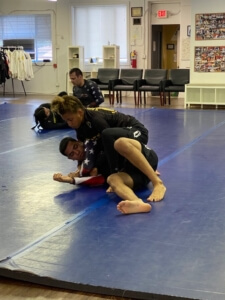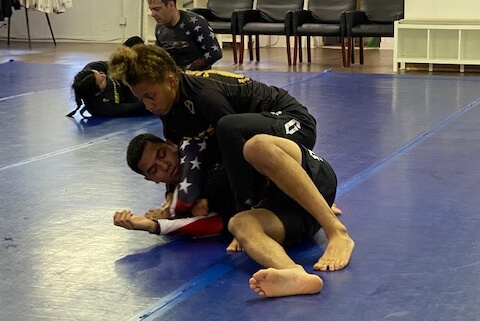When to be tight vs loose in BJJ
When to be tight vs loose in BJJ
When to be tight vs loose in BJJ. When it comes to physicality, Jiu-Jitsu is a game of contrasts. There are times we need to be loose and relaxed and times we need extreme isometric tension in order to be effective. Learning to balance these opposing demands is a key requirement for your improvement and the price of getting it wrong is either fatigue or ineffective application of potentially winning moves. As a general rule, the more movement is the key to gaining advantage, the looser and more relaxed you want to be. Tightness makes our movement both tiring and inefficient. The more STOPPING AND OPPONENTS MOVEMENT is the key to success, the tighter we want to be. Here, our Savarese BJJ (bergencountybjj.com) student Mariana shows total pressure in her application of the S-Mount. This is exactly the time you want tightness to hold an opponent in an effort to secure a finishing hold long enough to do real damage. It’s hard to imagine that just a few seconds before and after this photo her body was very relaxed, making it possible for her to move smoothly and easily into the move and into a follow up afterwards. Learning to switch gears between softness and hardness is a big part of your progress in the sport and represents a good sign that you are making progress. If you constantly find yourself getting tired or having opponents skip out of your moves even when the initial application was good, then there is a good chance that your physical switching from dynamic looseness to isometric tension is at fault.

When to be tight vs loose in BJJ



